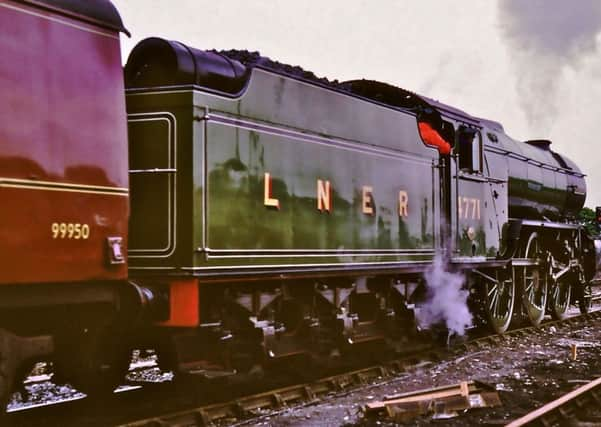All railway changes need time to bed in


Managements of some companies have been trying to remove guards from trains, saying this is a simple issue of who opens and shuts the doors. It requires only the smallest amount of thought to realise that this is the least of the implications of such a move.
How many passengers on a busy train actually realise that in some cases there is no guard?
Advertisement
Hide AdAdvertisement
Hide AdOne of the biggest mistakes the rail unions made was to agree to ‘Driver Only Operation’ in some areas about 30 years ago.
Never mind what staff say, it is what the passengers say when they realise the full implications of having nobody on the train to deter misbehaviour or to take charge if there is an incident. Passengers should be campaigning for guards to be restored on trains currently running without them.
There is also rising discontent about the poor quality of service in some areas while fares keep rising, and a high proportion of people want the railways to be re-nationalised as information seeps out about the amount of money paid to the managements of privatised companies.
Those in favour of the present system try to persuade people that it would be enormously expensive to buy out the current franchises. It would, of course, if that were how it was done, but nobody is suggesting that it would be.
Advertisement
Hide AdAdvertisement
Hide AdThe sensible arrangement would take a long time, but it is to simply let each franchise expire and not re-let it. The cost of doing so is nil.
The present Government will be desperate to re-let the East Coast franchise before the next election, as it was before the last one, which is, I believe, one of the reasons why it went wrong. It would be wrong to blame Stagecoach for putting in an unrealistic bid. The blame really lies with the Government for accepting it.
Those who want the railways to be re-nationalised are hoping that a general election occurs before the East Coast franchise can be re-let. There seems to be every possibility that this will happen on the basis that it is not oppositions which win elections, but rather governments which lose them.
During both world wars the Government took charge of the railways, and in both cases at the end of hostilities the railways were in very poor shape.
Advertisement
Hide AdAdvertisement
Hide AdAfter the First World War Winston Churchill wanted to nationalise them and run them at a loss for the benefit of the national economy, but in the event about 120 railway companies were statutorily grouped into four. After initial teething troubles were overcome, this arrangement worked well until after the Second World War when, again, the effects of the war meant that nationalisation was more or less inevitable.
It might have seemed that this meant that the whole railway system worked as a unified whole, but that is not the case. It was actually divided into six regions, which functioned very much as the ‘Big Four’ companies had done until the 1980s, when the operating structure was altered to what was known as ‘sectorisation’.
The key to understanding the successes and failures of the railway lies in the realisation that each change has a very long lead time before it works properly and its financial results can be judged.
Ten years is a working minimum, but politicians cannot wait that long. Their horizons are five years at the most.
Advertisement
Hide AdAdvertisement
Hide Ad• John Wylde is the author of Integrated Transport – a Will-o’-the-wisp? priced £14.95, post paid and signed by the author. Also Experiments in Public Transport Operation, at £11.95. Order through www.john-wylde.co.uk or from Grieves in Berwick.